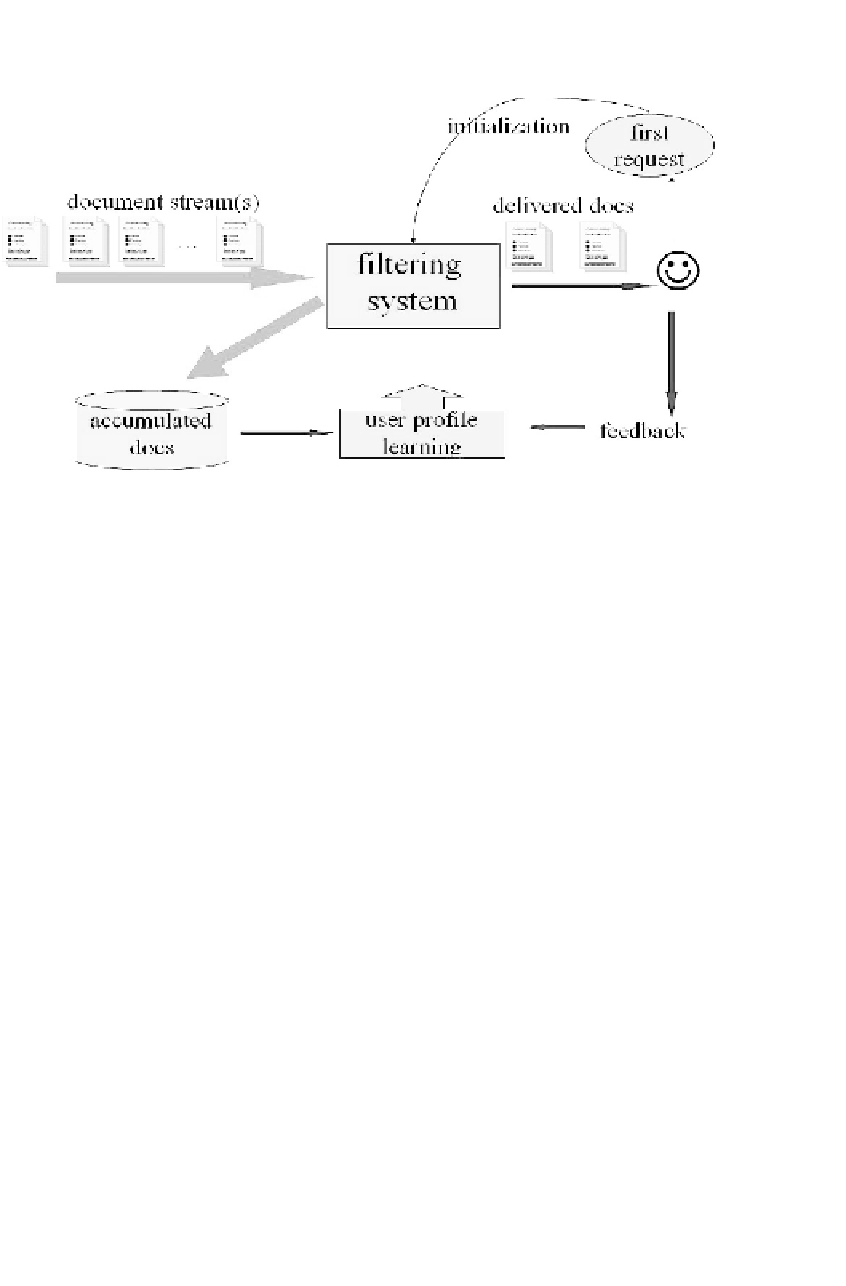Database Reference
In-Depth Information
FIGURE 8.1
: A typical filtering system. A filtering system can serve many
users, although only one user is shown in the figure. Information can be
documents, images, or videos. Without loss of generality, we focus on text
documents in this chapter.
represented in a user profile. The profile contains one or more classes, such
as “stock” or “music,” and each class corresponds to one information need.
When a user has a new information need, he/she sends to the system an initial
request, such as a query or an example of what he/she wants. The system
then initializes and creates a new online classifier in the user's profile to serve
this information need. As future documents arrive, the system delivers docu-
ments the classifier considered relevant to the user. The user may then read
the delivered documents and provide explicit feedback, such as identifying a
document as “good” or “bad.” The user also provides some implicit feedback,
such as deleting a document without reading it or saving a document. The
filtering system uses the user feedback accumulated over time to update the
user profile.
Adaptive filtering vs. retrieval:
Standard
ad hoc
retrieval systems,
such as search engines, let users use short queries to pull information out of
a repository. These systems treat all users the same given the same query.
Most IR systems return back documents that match a user query. They
assume that a user knows what he/she wants, and what words to use to
describe it whenever he/she has an information need. However, a user often








Search WWH ::

Custom Search